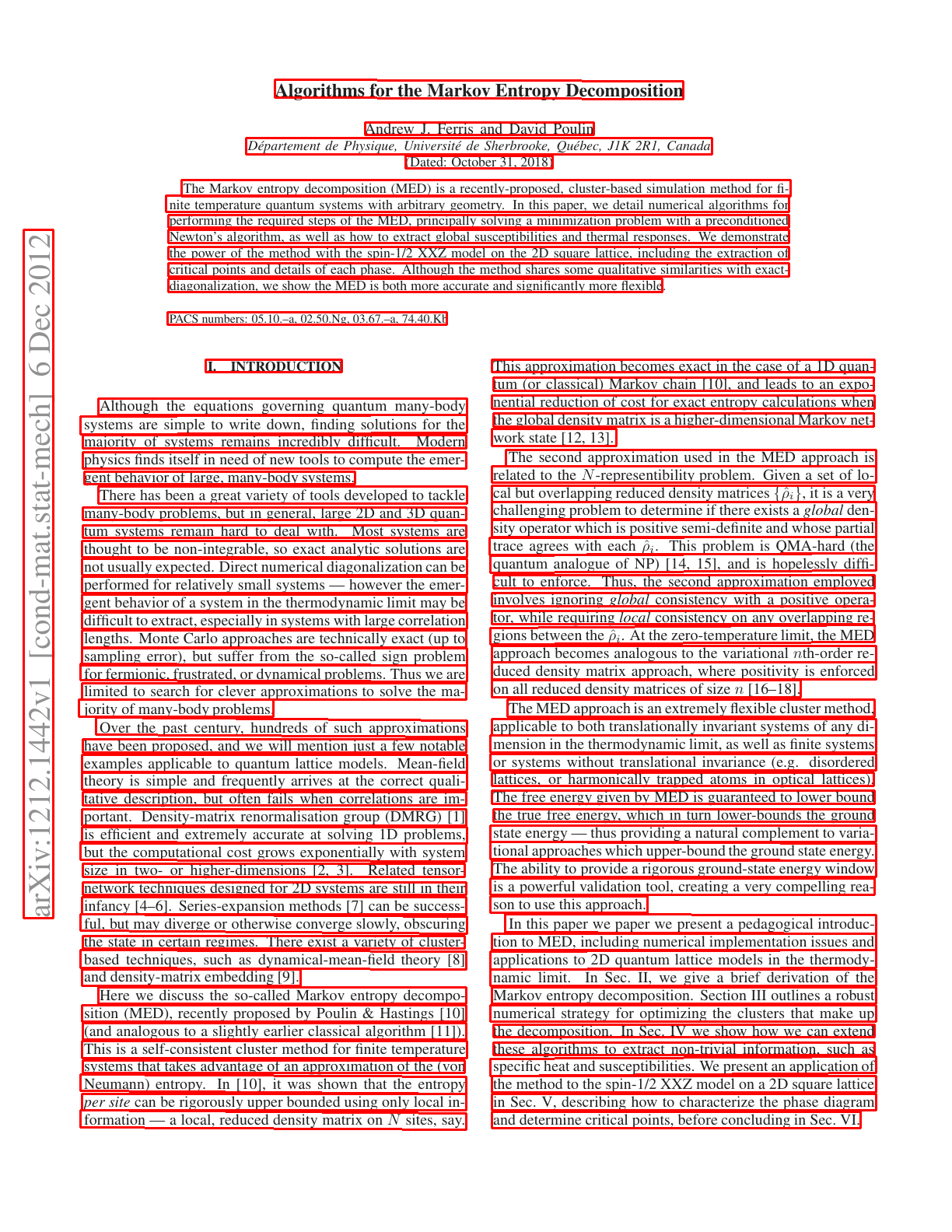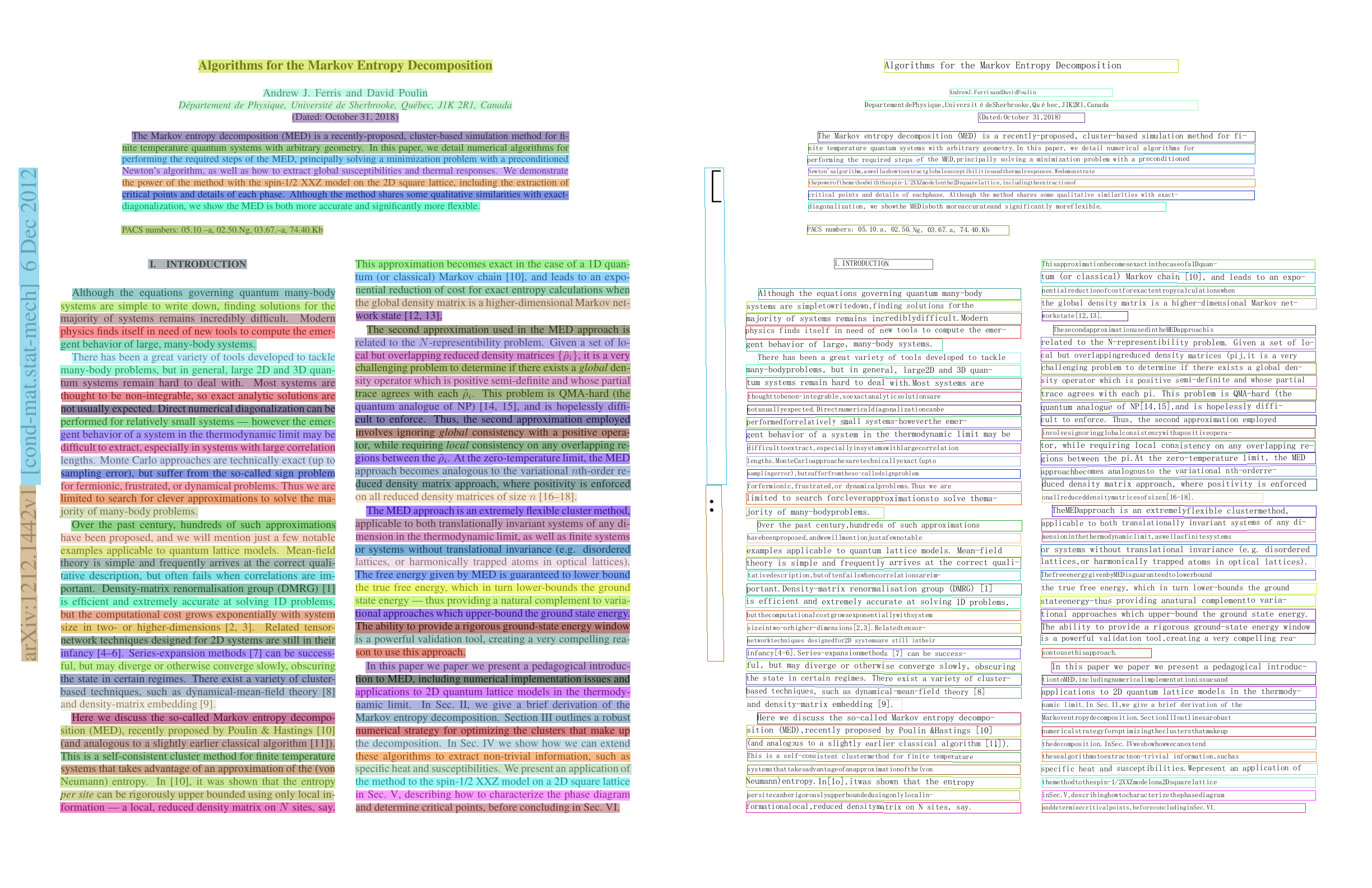|
|
--- |
|
|
license: apache-2.0 |
|
|
library_name: PaddleOCR |
|
|
language: |
|
|
- en |
|
|
- zh |
|
|
pipeline_tag: image-to-text |
|
|
tags: |
|
|
- OCR |
|
|
- PaddlePaddle |
|
|
- PaddleOCR |
|
|
- textline_detection |
|
|
--- |
|
|
|
|
|
# PP-OCRv3_server_det |
|
|
|
|
|
## Introduction |
|
|
|
|
|
PP-OCRv3_server_det is one of the PP-OCRv3_det series models, a set of text detection models developed by the PaddleOCR team. This server-optimized text detection model offers higher efficiency, making it ideal for deployment on edge devices. |
|
|
|
|
|
## Quick Start |
|
|
|
|
|
### Installation |
|
|
|
|
|
1. PaddlePaddle |
|
|
|
|
|
Please refer to the following commands to install PaddlePaddle using pip: |
|
|
|
|
|
```bash |
|
|
# for CUDA11.8 |
|
|
python -m pip install paddlepaddle-gpu==3.0.0 -i https://www.paddlepaddle.org.cn/packages/stable/cu118/ |
|
|
|
|
|
# for CUDA12.6 |
|
|
python -m pip install paddlepaddle-gpu==3.0.0 -i https://www.paddlepaddle.org.cn/packages/stable/cu126/ |
|
|
|
|
|
# for CPU |
|
|
python -m pip install paddlepaddle==3.0.0 -i https://www.paddlepaddle.org.cn/packages/stable/cpu/ |
|
|
``` |
|
|
|
|
|
For details about PaddlePaddle installation, please refer to the [PaddlePaddle official website](https://www.paddlepaddle.org.cn/en/install/quick). |
|
|
|
|
|
2. PaddleOCR |
|
|
|
|
|
Install the latest version of the PaddleOCR inference package from PyPI: |
|
|
|
|
|
```bash |
|
|
python -m pip install paddleocr |
|
|
``` |
|
|
|
|
|
### Model Usage |
|
|
|
|
|
You can quickly experience the functionality with a single command: |
|
|
|
|
|
```bash |
|
|
paddleocr text_detection \ |
|
|
--model_name PP-OCRv3_server_det \ |
|
|
-i https://cdn-uploads.huggingface.co/production/uploads/681c1ecd9539bdde5ae1733c/3ul2Rq4Sk5Cn-l69D695U.png |
|
|
``` |
|
|
|
|
|
You can also integrate the model inference of the text detection module into your project. Before running the following code, please download the sample image to your local machine. |
|
|
|
|
|
```python |
|
|
from paddleocr import TextDetection |
|
|
model = TextDetection(model_name="PP-OCRv3_server_det") |
|
|
output = model.predict(input="https://cdn-uploads.huggingface.co/production/uploads/681c1ecd9539bdde5ae1733c/3ul2Rq4Sk5Cn-l69D695U.png", batch_size=1) |
|
|
for res in output: |
|
|
res.print() |
|
|
res.save_to_img(save_path="./output/") |
|
|
res.save_to_json(save_path="./output/res.json") |
|
|
``` |
|
|
|
|
|
After running, the obtained result is as follows: |
|
|
|
|
|
```json |
|
|
{'res': {'input_path': '/root/.paddlex/predict_input/3ul2Rq4Sk5Cn-l69D695U.png', 'page_index': None, 'dt_polys': array([[[ 635, 1432], |
|
|
..., |
|
|
[ 635, 1449]], |
|
|
|
|
|
..., |
|
|
|
|
|
[[ 356, 106], |
|
|
..., |
|
|
[ 354, 129]]], dtype=int16), 'dt_scores': [0.9872102548912663, 0.7382263155744568, ..., 0.7389449598798481]}} |
|
|
``` |
|
|
|
|
|
The visualized image is as follows: |
|
|
|
|
|
 |
|
|
|
|
|
For details about usage command and descriptions of parameters, please refer to the [Document](https://paddlepaddle.github.io/PaddleOCR/latest/en/version3.x/module_usage/text_detection.html#iii-quick-start). |
|
|
|
|
|
### Pipeline Usage |
|
|
|
|
|
The ability of a single model is limited. But the pipeline consists of several models can provide more capacity to resolve difficult problems in real-world scenarios. |
|
|
|
|
|
#### PP-OCRv3 |
|
|
|
|
|
The general OCR pipeline is used to solve text recognition tasks by extracting text information from images and outputting it in text form. And there are 5 modules in the pipeline: |
|
|
* Document Image Orientation Classification Module (Optional) |
|
|
* Text Image Unwarping Module (Optional) |
|
|
* Text Line Orientation Classification Module (Optional) |
|
|
* Text Detection Module |
|
|
* Text Recognition Module |
|
|
|
|
|
Run a single command to quickly experience the OCR pipeline: |
|
|
|
|
|
```bash |
|
|
paddleocr ocr -i https://cdn-uploads.huggingface.co/production/uploads/681c1ecd9539bdde5ae1733c/3ul2Rq4Sk5Cn-l69D695U.png \ |
|
|
--text_detection_model_name PP-OCRv3_server_det \ |
|
|
--text_recognition_model_name PP-OCRv3_mobile_rec \ |
|
|
--use_doc_orientation_classify False \ |
|
|
--use_doc_unwarping False \ |
|
|
--use_textline_orientation False \ |
|
|
--save_path ./output \ |
|
|
--device gpu:0 |
|
|
``` |
|
|
|
|
|
Results are printed to the terminal: |
|
|
|
|
|
```json |
|
|
{'res': {'input_path': '/root/.paddlex/predict_input/3ul2Rq4Sk5Cn-l69D695U.png', 'page_index': None, 'model_settings': {'use_doc_preprocessor': True, 'use_textline_orientation': False}, 'doc_preprocessor_res': {'input_path': None, 'page_index': None, 'model_settings': {'use_doc_orientation_classify': False, 'use_doc_unwarping': False}, 'angle': -1}, 'dt_polys': array([[[ 354, 106], |
|
|
..., |
|
|
[ 354, 129]], |
|
|
|
|
|
..., |
|
|
|
|
|
[[ 635, 1433], |
|
|
..., |
|
|
[ 635, 1449]]], dtype=int16), 'text_det_params': {'limit_side_len': 64, 'limit_type': 'min', 'thresh': 0.3, 'max_side_limit': 4000, 'box_thresh': 0.6, 'unclip_ratio': 1.5}, 'text_type': 'general', 'textline_orientation_angles': array([-1, ..., -1]), 'text_rec_score_thresh': 0.0, 'rec_texts': ['Algorithms for the Markov Entropy Decomposition', 'AndrewJ.FerrisandDavidPoulin', 'DepartementdePhysique,UniversitédeSherbrooke,Québec,JIK2Rl,Canada', '(Dated:October 31,2018)', 'The Markov entropy decomposition (MED) is a recently-proposed, cluster-based simulation method for fi-', 'nite temperature quantum systems with arbitrary geometry.In this paper, we detail numerical algorithms for', 'performing the required steps of the MED,principally solving a minimization problem with a preconditioned', '[', "Newton'salgorithm,aswellashowtoextractglobalsusceptibilitiesandthermalresponses.Wedemonstrate", 'thepowerofthemethodwiththespin-1/2XXZmodelonthe2Dsquarelattice,includingtheextractionof', 'critical points and details of eachphase. Although the method shares some qualitative similarities with exact-', 'diagonalization, we showthe MEDisboth moreaccurateand significantly moreflexible.', 'PACS numbers: 05.10.a, 02.50.Ng, 03.67.a, 74.40.Kb', 'I.INTRODUCTION', 'Thisapproximationbecomesexactinthecaseofa1Dquan-', 'tum (or classical) Markov chain [1O], and leads to an expo-', 'Although the equations governing quantum many-body', 'nentialreductionofcostforexactentropycalculationswhen', 'systems are simpletowritedown,finding solutions forthe', 'the global density matrix is a higher-dimensional Markov net-', 'majority of systems remains incrediblydifficult.Modern', 'workstate[12,13].', 'physics finds itself in need of new tools to compute the emer-', 'ThesecondapproximationusedintheMEDapproachis', 'gent behavior of large, many-body systems.', 'related to the N-representibility problem. Given a set of lo-', 'There has been a great variety of tools developed to tackle', 'cal but overlappingreduced density matrices (pij,it is a very', 'many-bodyproblems, but in general, large2D and 3D quan-', 'challenging problem to determine if there exists a global den-', 'tum systems remain hard to deal with.Most systems are', 'sity operator which is positive semi-definite and whose partial', 'thoughttobenon-integrable,soexactanalyticsolutionsare', 'trace agrees with each pi. This problem is QMA-hard (the', 'notusuallyexpected.Directnumericaldiagonalizationcanbe', 'quantum analogue of NP[14,15],and is hopelessly diffi-', 'performedforrelatively small systems-howeverthe emer-', 'cult to enforce. Thus, the second approximation employed', 'gent behavior of a system in the thermodynamic limit may be', 'involvesignoringglobalconsistencywithapositiveopera-', 'difficulttoextract,especiallyinsystemswithlargecorrelation', 'tor, while requiring local consistency on any overlapping re-', 'lengths.MonteCarloapproachesaretechnicallyexact(upto', 'gions between the pi.At the zero-temperature limit, the MED', 'samplingerror),butsufferfromtheso-calledsignproblem', 'approachbecomes analogousto the variational nth-orderre-', 'forfermionic,frustrated,or dynamicalproblems.Thus we are', 'duced density matrix approach, where positivity is enforced', ':', 'limited to search forcleverapproximationsto solve thema-', 'onallreduceddensitymatricesofsizen[16-18].', 'jority of many-bodyproblems.', 'TheMEDapproach is an extremelyflexible clustermethod,', 'Over the past century,hundreds of such approximations', 'applicable to both translationally invariant systems of any di-', 'havebeenproposed,andwewillmentionjustafewnotable', 'mensioninthethermodynamiclimit,aswellasfinitesystems', 'examples applicable to quantum lattice models. Mean-field', 'or systems without translational invariance (e.g. disordered', 'theory is simple and frequently arrives at the correct quali-', 'lattices,or harmonically trapped atoms in optical lattices).', 'tativedescription,butoftenfailswhencorrelationsareim-', 'ThefreeenergygivenbyMEDisguaranteedtolowerbound', 'portant.Density-matrix renormalisation group (DMRG) [1]', 'the true free energy, which in turn lower-bounds the ground', 'is efficient and extremely accurate at solving 1D problems,', 'stateenergy-thus providing anatural complementto varia-', 'butthecomputationalcostgrowsexponentiallywithsystem', 'tional approaches which upper-bound the ground state energy.', 'sizeintwo-orhigher-dimensions[2,3].Relatedtensor-', 'The ability to provide a rigorous ground-state energy window', 'networktechniques designedfor2D systemsare still intheir', 'is a powerful validation tool,creating a very compelling rea-', 'infancy[4-6].Series-expansionmethods [7] can be success-', 'sontousethisapproach.', 'ful, but may diverge or otherwise converge slowly, obscuring', 'In this paper we paper we present a pedagogical introduc-', 'the state in certain regimes. There exist a variety of cluster-', 'tiontoMED,includingnumericalimplementationissuesand', 'based techniques, such as dynamical-mean-field theory [8]', 'applications to 2D quantum lattice models in the thermody-', 'and density-matrix embedding [9].', 'namic limit.In Sec.II,we give a brief derivation of the', 'Here we discuss the so-called Markov entropy decompo-', 'Markoventropydecomposition.SectionIlIoutlinesarobust', 'sition (MED),recently proposed by Poulin &Hastings [10]', 'numericalstrategyforoptimizingtheclustersthatmakeup', '(and analogous to a slightly earlier classical algorithm [11]).', 'thedecomposition.InSec.IVweshowhowwecanextend', 'This is a self-consistent clustermethod for finite temperature', 'thesealgorithmstoextractnon-trivial information,suchas', 'systemsthattakesadvantageofanapproximationofthe(von', 'specific heat and susceptibilities.Wepresent an application of', 'Neumann)entropy.In[1o],itwas shown that the entropy', 'themethodtothespin-1/2XXZmodelona2Dsquarelattice', 'persitecanberigorouslyupperboundedusingonlylocalin-', 'inSec.V,describinghowtocharacterizethephasediagram', 'formationalocal,reduced densitymatrix on N sites, say.', 'anddeterminecriticalpoints,beforeconcludinginSec.VI.'], 'rec_scores': array([0.92588544, ..., 0.91773278]), 'rec_polys': array([[[ 354, 106], |
|
|
..., |
|
|
[ 354, 129]], |
|
|
|
|
|
..., |
|
|
|
|
|
[[ 635, 1433], |
|
|
..., |
|
|
[ 635, 1449]]], dtype=int16), 'rec_boxes': array([[ 354, ..., 129], |
|
|
..., |
|
|
[ 635, ..., 1449]], dtype=int16)}} |
|
|
``` |
|
|
|
|
|
If save_path is specified, the visualization results will be saved under `save_path`. The visualization output is shown below: |
|
|
|
|
|
 |
|
|
|
|
|
The command-line method is for quick experience. For project integration, also only a few codes are needed as well: |
|
|
|
|
|
```python |
|
|
from paddleocr import PaddleOCR |
|
|
|
|
|
ocr = PaddleOCR( |
|
|
text_detection_model_name="PP-OCRv3_server_det", |
|
|
text_recognition_model_name="PP-OCRv3_mobile_rec", |
|
|
use_doc_orientation_classify=False, # Disables document orientation classification model via this parameter |
|
|
use_doc_unwarping=False, # Disables text image rectification model via this parameter |
|
|
use_textline_orientation=False, # Disables text line orientation classification model via this parameter |
|
|
) |
|
|
result = ocr.predict("https://cdn-uploads.huggingface.co/production/uploads/681c1ecd9539bdde5ae1733c/3ul2Rq4Sk5Cn-l69D695U.png") |
|
|
for res in result: |
|
|
res.print() |
|
|
res.save_to_img("output") |
|
|
res.save_to_json("output") |
|
|
``` |
|
|
|
|
|
For details about usage command and descriptions of parameters, please refer to the [Document](https://paddlepaddle.github.io/PaddleOCR/latest/en/version3.x/pipeline_usage/OCR.html#2-quick-start). |
|
|
|
|
|
|
|
|
## Links |
|
|
|
|
|
[PaddleOCR Repo](https://github.com/paddlepaddle/paddleocr) |
|
|
|
|
|
[PaddleOCR Documentation](https://paddlepaddle.github.io/PaddleOCR/latest/en/index.html) |